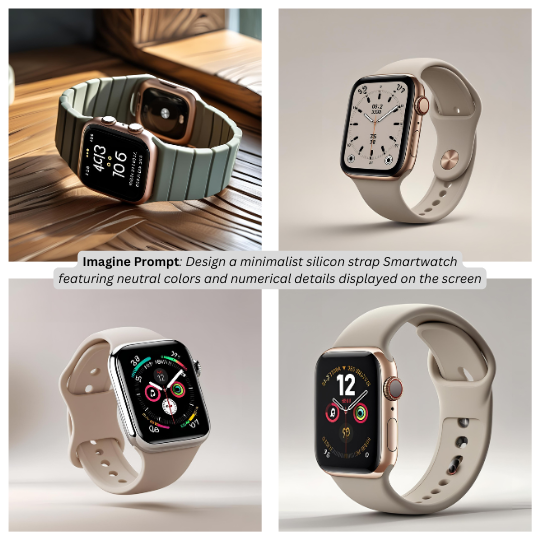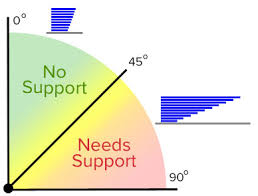AI for Product Design: The Future of Innovation and Efficiency
- Bhargava Krishna Marripati

- Jul 29
- 3 min read

Table of contents:
Conceptualization with AI
Design Variations and Customization
Customization Based on User Inputs
Introduction to AI in Product Design
At our core, we are a product development company — taking ideas from initial concept all the way to prototyping and ultimately to mass manufacturing. Every successful product begins with one vital phase: Design. It's a complex, creative, and highly skilled process that demands both technical precision and imaginative thinking.
Traditionally, product design has required deep expertise, time-intensive iteration, and significant effort to translate ideas into manufacturable solutions. But today, we’re stepping into the future of innovation.
We’ve begun integrating Artificial Intelligence (AI) into our design workflows — not to replace human designers, but to supercharge their creativity and speed. Tools like ChatGPT for ideation and research, Midjourney for concept visualization, and Viscom for rendering detailed product sketches have transformed how we approach the earliest stages of development.
And this is how we are using AI in product design:
Industrial Design vs. Product Design
Product design often forms a part of the larger industrial design process. Industrial design and product design are closely related fields focused on creating and refining products, but they differ in scope and focus. Industrial design encompasses the broader process of developing mass-producible items, considering aesthetics, ergonomics, and manufacturability. Product design, on the other hand, often centers on the specific functionality, usability, and problem-solving aspects of individual products. I this blog I would genralzie and just say "Product Design".
AI in Design Research
Great products begin with deep, informed research — and AI is transforming how efficiently and effectively we can gather those insights. At the early stages of product development, tools like ChatGPT help streamline design research by generating ideas, analyzing trends, and organizing complex information.
AI-powered tools can dramatically reduce the time spent on Early-Stage Design Research while enhancing its depth and scope. Here’s how we’re leveraging AI in this phase:
Market Gap Identification: Instead of spending hours manually reviewing competitors, AI can quickly highlight unaddressed customer needs, underserved market segments, and emerging trends.
Target Group Analysis: AI can help define and refine potential user personas, suggesting demographics, behaviors, and preferences based on your product category.
Feature Ideation: Based on user pain points and market expectations, AI can propose relevant product features to enhance usability, functionality, or differentiation.
Sustainability Opportunities: By scanning industry data and sustainability reports, AI can suggest eco-friendly materials, design-for-disassembly options, or low-impact manufacturing methods.
Exploration of New Technologies: AI can identify and recommend emerging technologies that align with the product vision — whether it’s smart sensors, energy-efficient components, or new materials.
AI for Product Design
AI tools can be useful to generate images for product design. Key applycations include
Conceptualization with AI
AI helps designers in brainstorming and conceptualizing new product designs and generates images based on input parameters or descriptions
Imagine Prompt: design a minimalist silicon strap Smartwatch featuring neutral colors and numerical details displayed on the screen
By tweaking prompts like "sleek, matte-black, futuristic smartwatch," designers can generate tailored concepts aligned with the brand vision.
Design Variations and Customization
Need 50 versions of a watch with different colors and dials? AI's got you.
Midjourney and others AI's can pump out endless variations based on color, form, texture, and structure — no manual tweaking needed.

Customization is critical today. AI helps visualize product variants for different markets or customer preferences, improving UX and marketing.
Customization Based on User Inputs
Customers want personalized experiences. AI makes it possible at scale.

By integrating AI into your product configuration tool, you can show customers real-time product previews based on their choices.
AI Tools Used in Product Design
ChatGPT: Used for ideation, brainstorming, research, and writing product briefs. ChatGPT helps uncover opportunities, summarize data, and even create user personas.
Midjourney: A text-to-image generator that brings abstract ideas into realistic product visuals in seconds. Perfect for conceptualization and early design mood boards.
Viscom & Prome AI: Sketch-to-image tools that convert hand-drawn designs into high-fidelity renders — a huge time-saver for industrial designers.
Leonardo AI & Stable Diffusion: These tools allow training of models based on reference images to match a specific style or design language.
Viscom for Complex Designs: Perfect for high-detail products like cars or shoes with intricate surfaces.
Prome AI for Artistic Renders: Choose between minimalist render styles or hyper-detailed CGI visuals depending on the product category.
Synthetic Users: It essentially creates artificial people that you can use to test product ideas.
Conclusion
AI in product design is like giving wings to your creativity. It supercharges ideation, speeds up visualization, and streamlines research, all while saving time and costs. But it isn’t perfect — human insight, creativity, and logic still matter.
The future is not AI versus designers, but AI with designers.




Comments